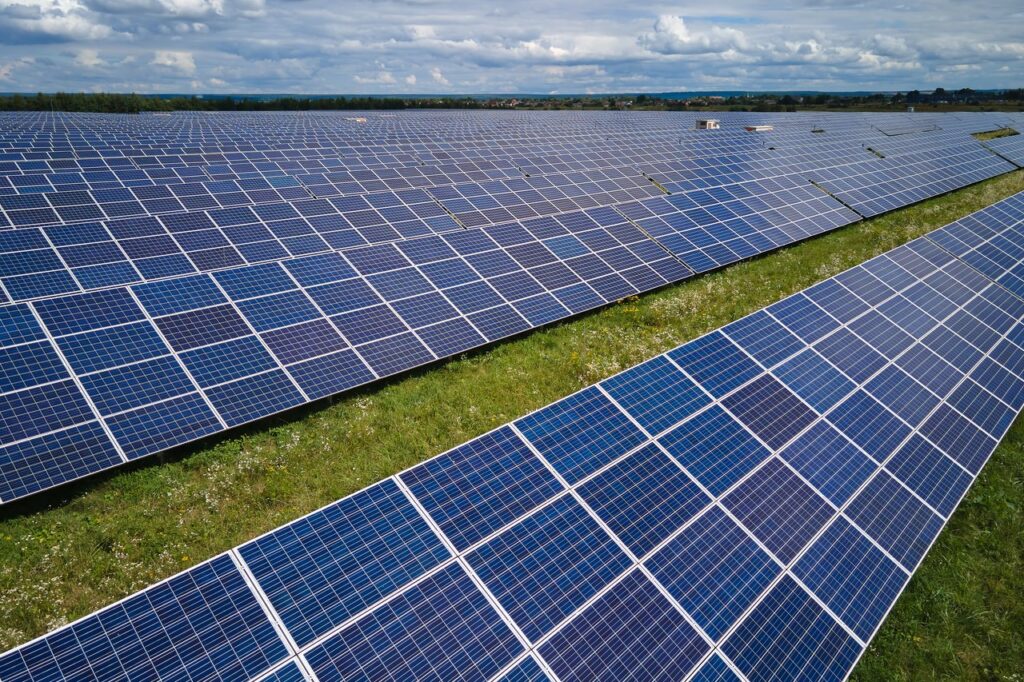Over the last few decades, having a home internet connection has become almost as crucial as having access to water and electricity. Faster and more advanced internet solutions are being introduced to meet the growing demand in the market. As a result, in recent years, there has been much talk about a next-generation network, namely high-speed internet, a service that Enefit Connect also provides. But what exactly is it? Let us take a closer look.
Today, there are two main types of connectivity technologies that provide a constant connection to end-users: wireless networks and wired networks. In addition to optical cables, which have reached almost half of the users and on which the high-speed internet of Enefit Connect is based, copper pairs and coaxial cables are also used in wired networks.
Wireless network vs wired network: advantages and disadvantages
The primary difference between the two network connections is the method they use to transmit data. In a wireless network, devices are connected through the transmission of radio waves. One of the most common examples of wireless connection is 4G/5G, the presence of which we do not even notice, for example, when our phone is in our pocket.
One advantage of a wireless network is that each new generation has offered higher data volumes and faster speeds. However, it cannot be done infinitely as the laws of physics will inevitably pose limitations in the form of channel width and range. To keep up with growing demand, it is essential to build increasingly more base stations, however each base station comes with a cost that may not be justified if there are not enough users in the area. A wider introduction of the wireless network thus requires increased investment in expanding and maintaining the network.
Another advantage of the wireless network is the ability to move within its coverage area, which is also one of its drawbacks. To ensure uniform coverage, a significant amount of energy must be used to provide coverage in areas where there are no consumers.
In the case of a wired network, data is transmitted through physical wires, as the name suggests. Optical cables made of glass fibres are used for high-speed internet connections. Optical cables use light to transmit data signals, allowing for significantly higher data transfer rates and bandwidth compared to copper or coaxial cables. In addition, the quality of the connection is not affected by weather or coverage, and the signal can be transmitted over significantly longer distances.
Copper pairs, which are an earlier generation technology compared to the fibre optic cable, serve a considerable number of customers, but their internet connection speed is limited. Customers who are closer to the operator’s device can achieve faster speeds of up to 200 Mbit/s. However, signal strength decreases with distance, resulting in increasingly lower speeds. Since copper and coaxial cables use electrical signals to transmit data, they are more susceptible to interference from weather conditions, particularly thunderstorms.
What is high-speed internet and why is it called a next-generation network?
High-speed internet is a communication network based on fibre-optic cables, providing a consistent download speed of at least 1 Gbit/s at any given time. This is the fastest and most unrestricted data solution both now and in the future.
For example, when at home, you can use multiple screens displaying moving images simultaneously, such as mobile phones, televisions and computers. Under normal conditions, such a situation may cause the image of some devices to freeze or become pixelated, but with high-speed internet this will not be the case.
The fibre-optic network is also notable for its remarkably low energy consumption. It only takes 0.02 watt-hours of energy to transmit 1 GB of data through a fibre-optic network, while copper cables and wireless networks consume nearly 10 and 10,000 times more energy, respectively. In addition, the fibre-optic network has the advantage of lasting for many decades without requiring regular investments.
The biggest advantage of the fibre-optic network developed by Enefit Connect, however, lies in operator neutrality. Operator neutrality means that the customer can choose an internet and TV service provider that best suits their needs. Customers in our network have a unique advantage in the market, as they have the freedom to make choices according to their wishes. It is similar to how, in the electricity network, we have the cable and the distribution board, but can choose a suitable electricity seller for ourselves.
Why is high-speed internet connection established only in rural areas?
One of the aims of Estonia’s Digital Agenda 2030 prepared by the Ministry of Economic Affairs and Communications is to ensure that ultrafast, reliable and affordable telecommunications connections are available throughout Estonia regardless of location, making it possible to create and use innovative services.
To this end, the government has taken on the responsibility of supporting the development of very high capacity access networks in rural areas, as high-speed internet availability is significantly better in cities. Therefore, as long as the existing copper cable or mobile connection networks provide satisfactory service to users, there is no need to prioritise building a new network in cities.
Currently, the Enefit high-speed internet network is available at nearly 75,000 addresses – to every tenth Estonian household. In the future, our goal is to bring fibre-optic based connections to every household, so that customers can enjoy a high-quality connection and have the freedom of choice.
To join, all you need to do is check our website to see if the service is available at your desired address. We will then start building the communications network and notify you when the work has been completed. All that is left to do then is to choose a suitable operator and conclude a service contract.
Read more about Enefit Connect’s future-proof internet and TV network here.
| End-user connection type | Connection | Technological capacity | Available in Estonia | Advantages | Disadvantages |
| Wireless network (4G, 5G etc) | Data transfer via radio waves, range up to 2–5 km depending on frequency | Up to 10 Gbit/s | 0.5–1 Gbit/s | – Fast connection to network – Installation takes less time – Mobility | – Connection quality depends on the number of users and range – Increased demand requires greater investment in network expansion – Higher maintenance costs |
| Optical cable (PON) | Fibre-optic cables that use light to transmit data, range up to 40 km | Up to 40 Gbit/s | Up to 1 Gbit/s | – Fast and high-quality connection that is not affected by weather or coverage – Ability to transmit larger volumes of data – Low energy consumption – Durable – Operator-neutral – Low maintenance costs | – Cost of purchasing may be higher than average – Cable installation may be needed to connect to the network |
| Copper cables (VDSLx, G.Fast) | Wired connection that uses electrical signals to transmit data, range up to 500 m | Up to 1 Gbit/s | Up to 200 Mbit/s | – Durable – Existing cables can often be used | – Connection quality and speed depends on location – High energy consumption |
| Coaxial cables (DOCSIS) | Wired connection that uses electrical signals to transmit data, range up to 30 km | Up to 10 Gbit/s | Up to 500 Mbit/s | – Durable – Existing cables can often be used | – Large volumes of data cannot be transferred – High energy consumption |



